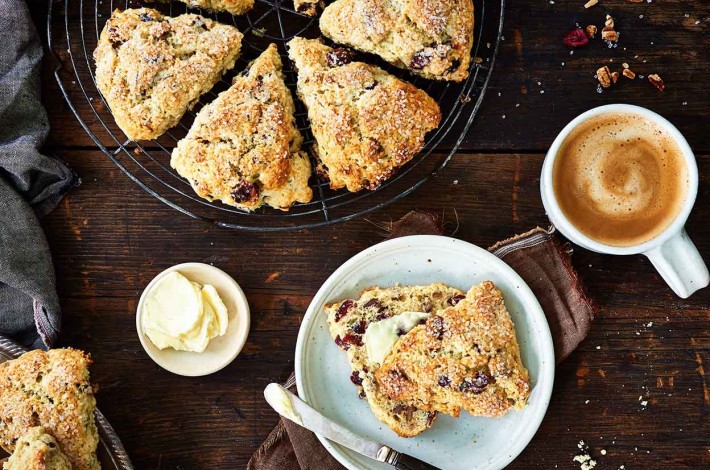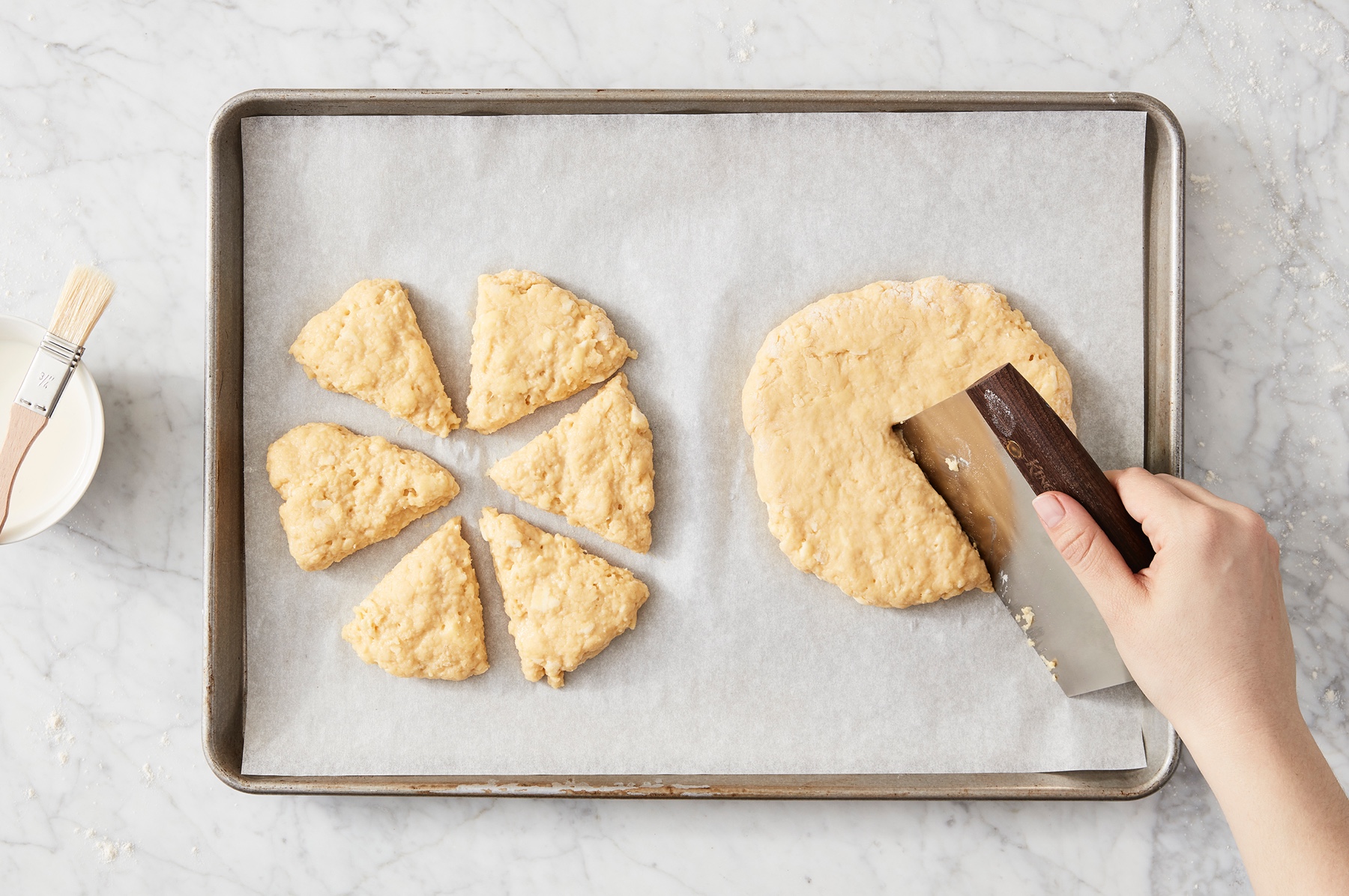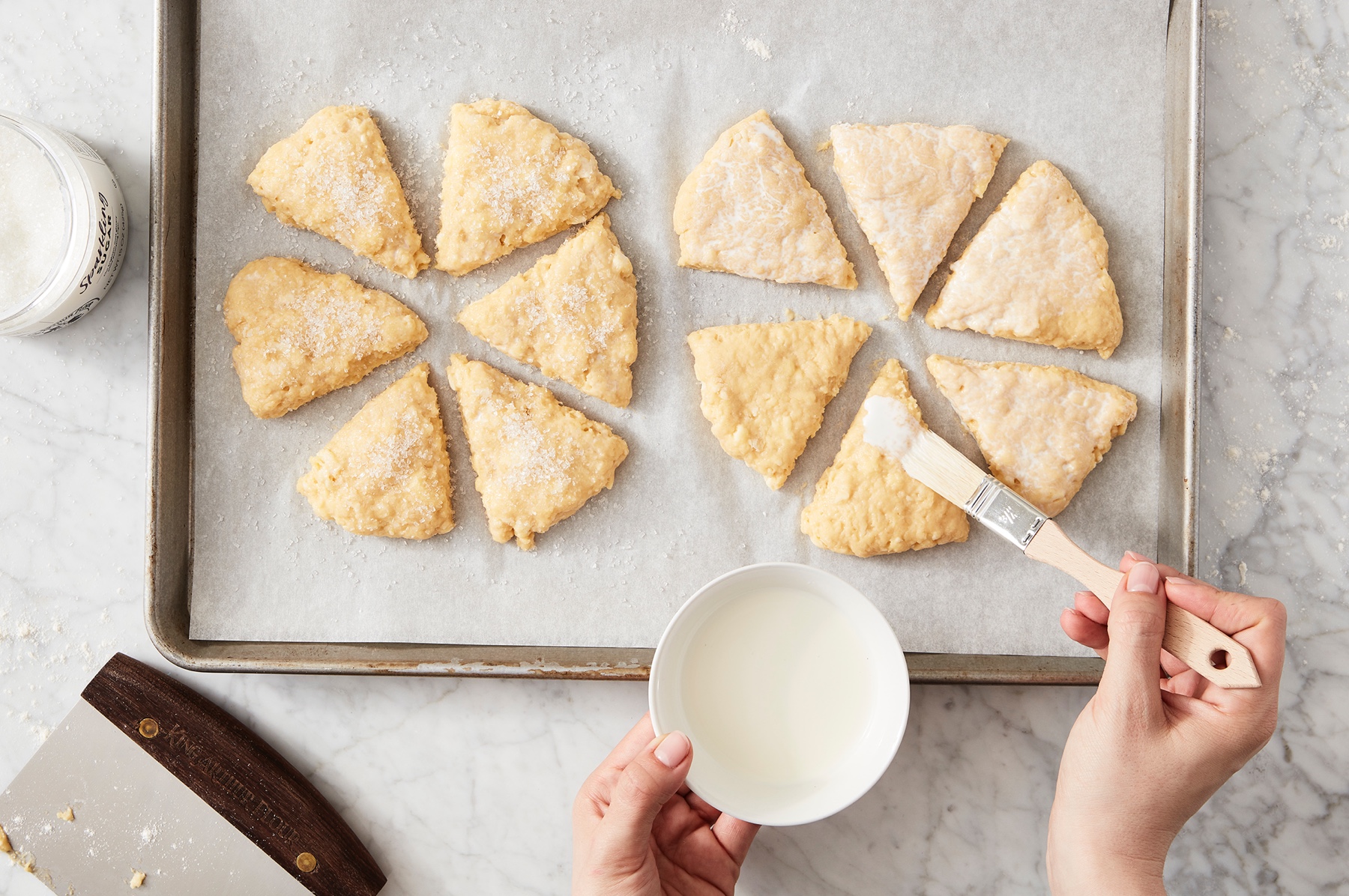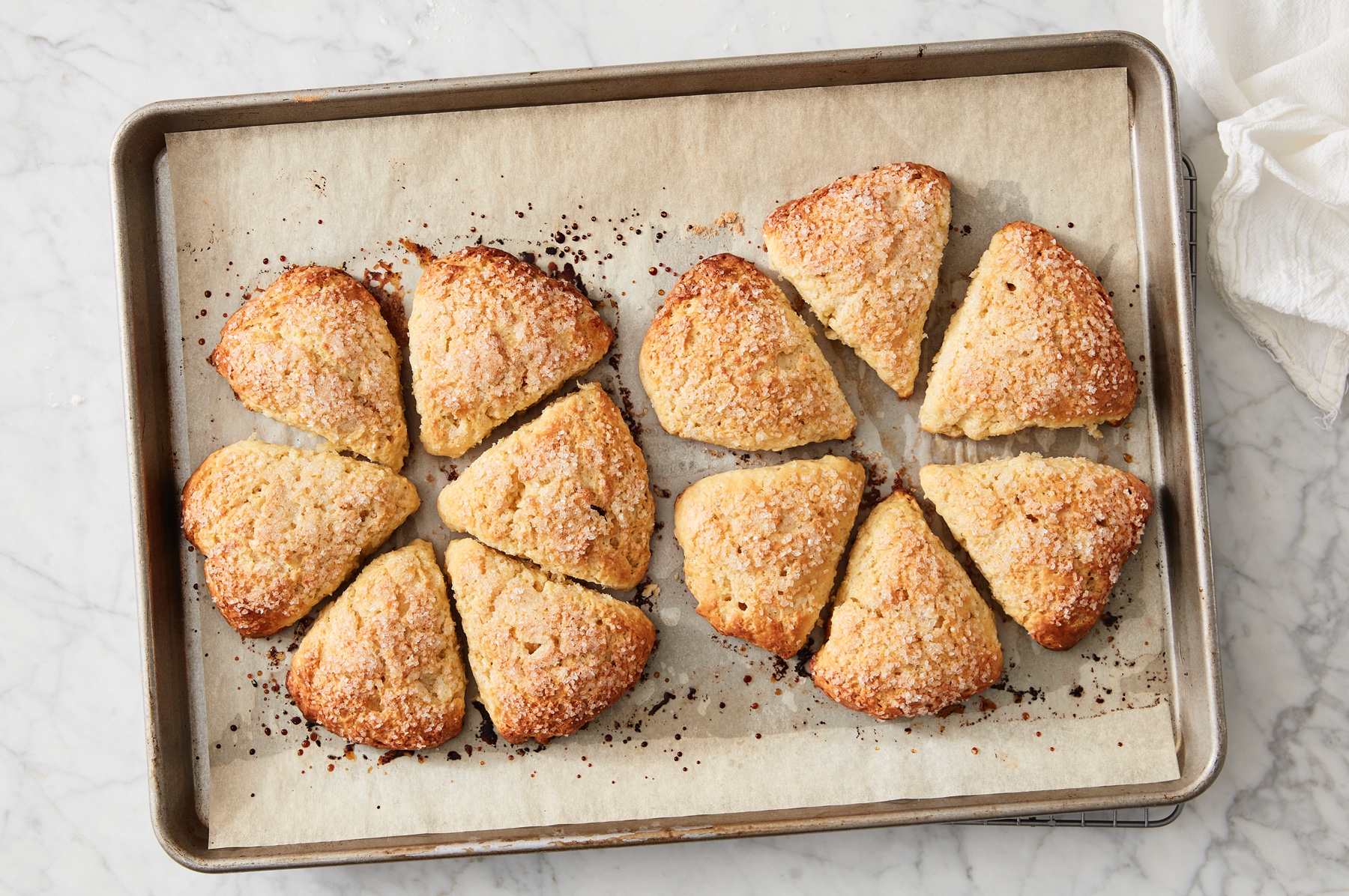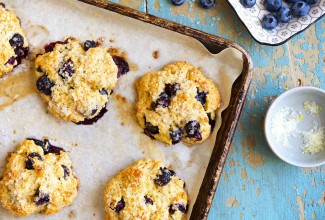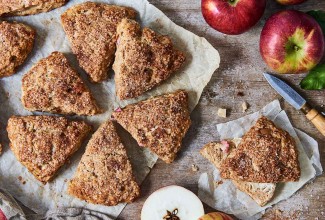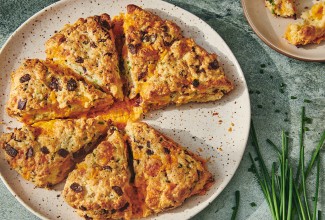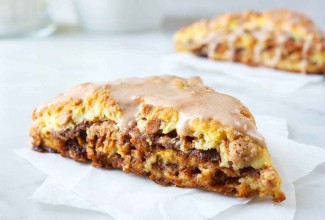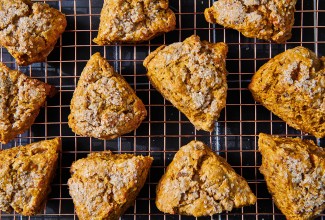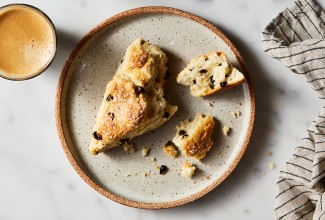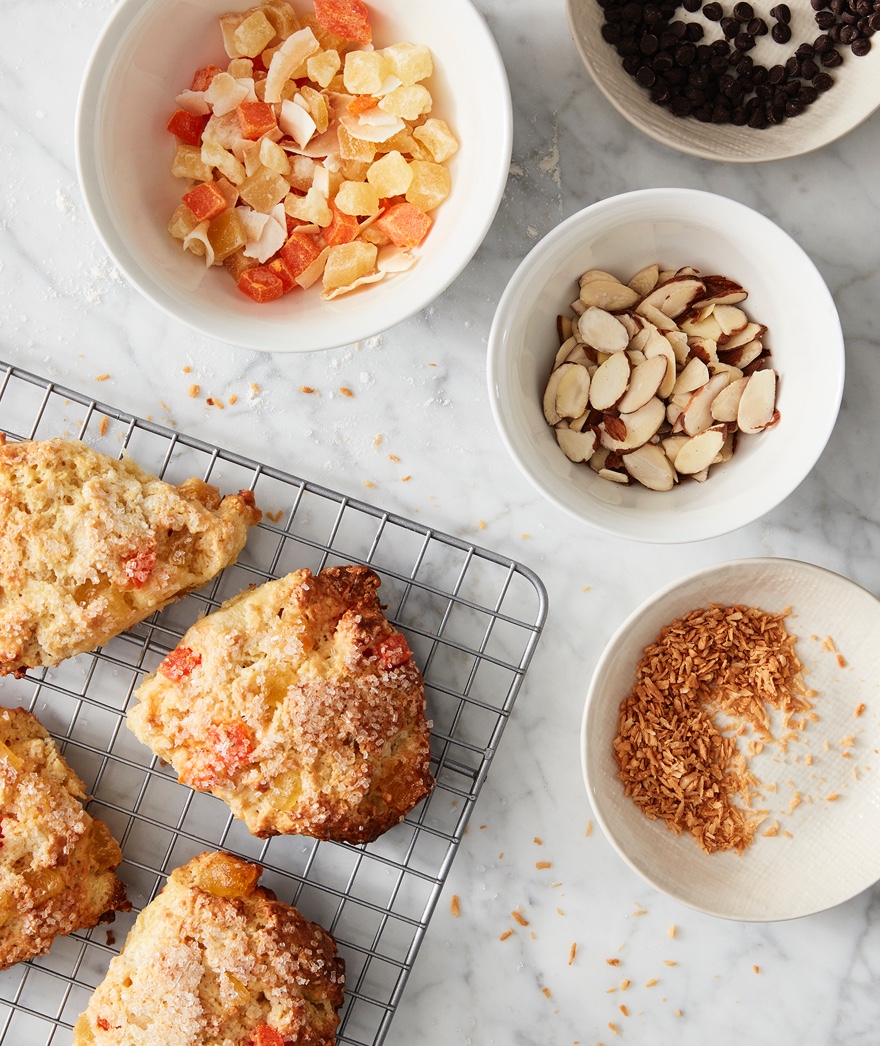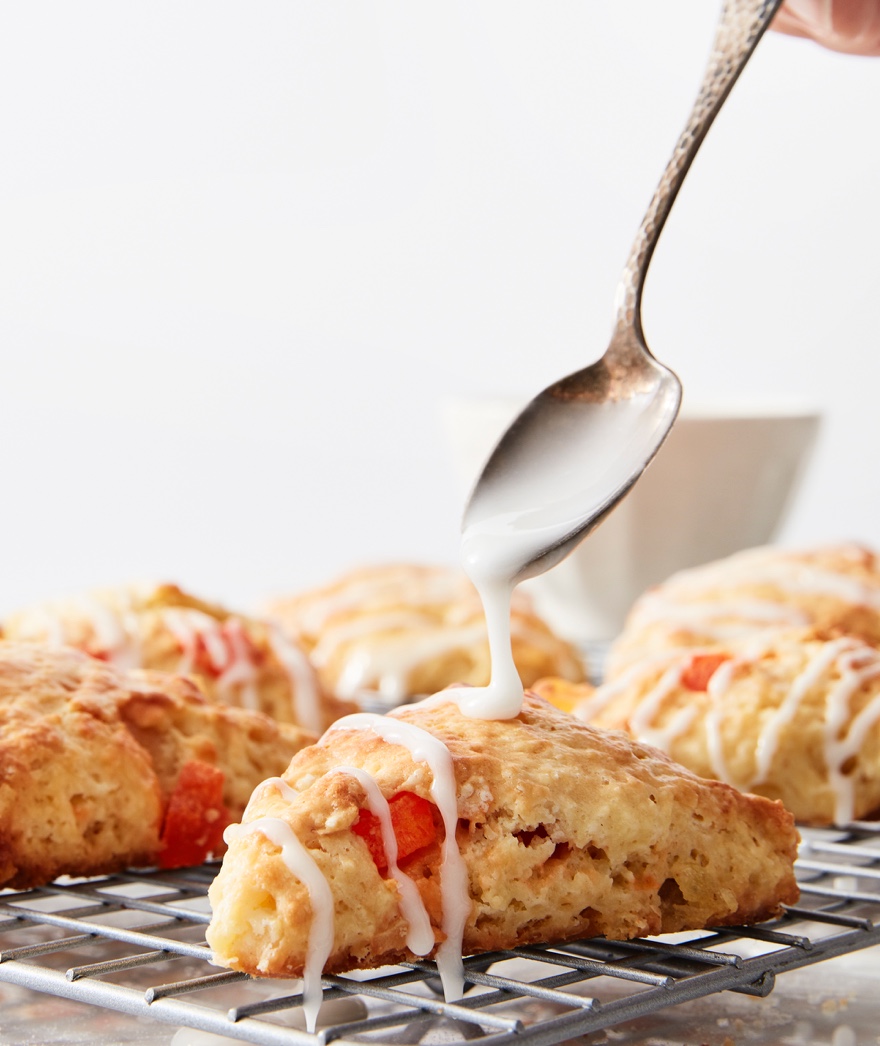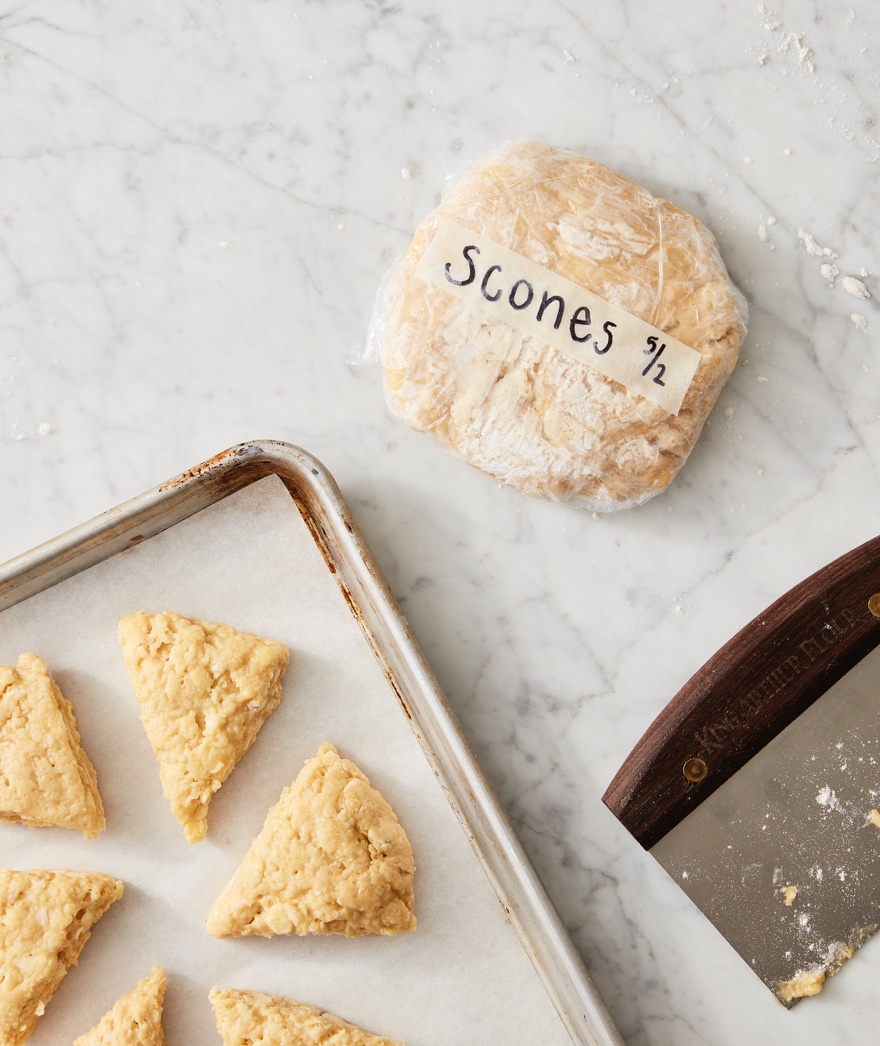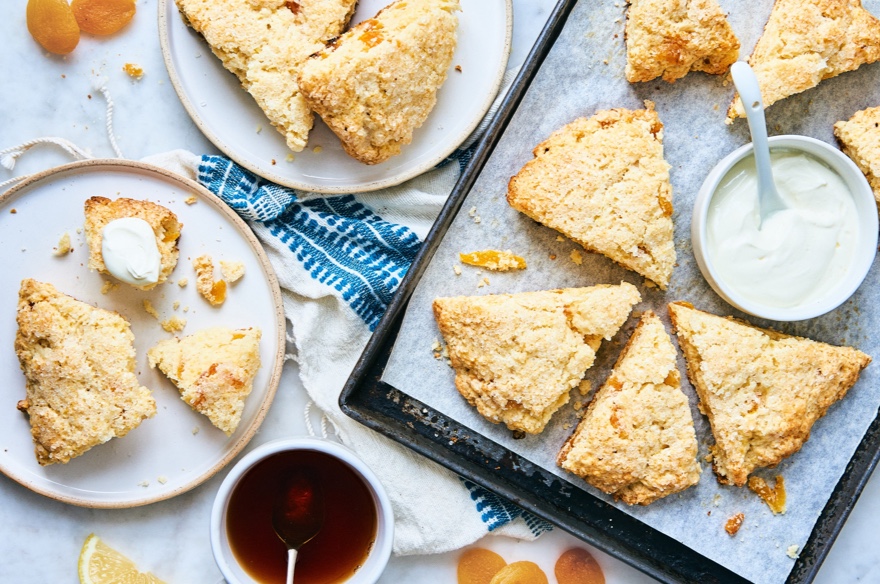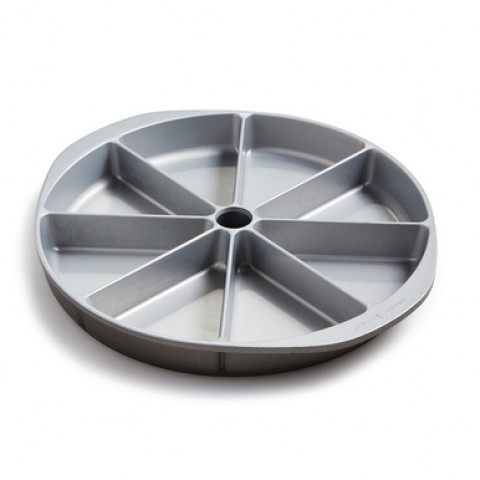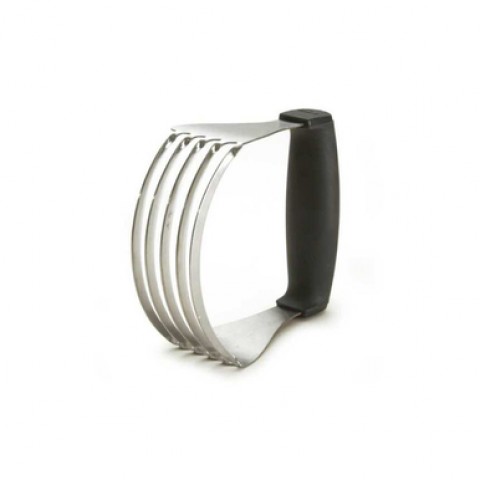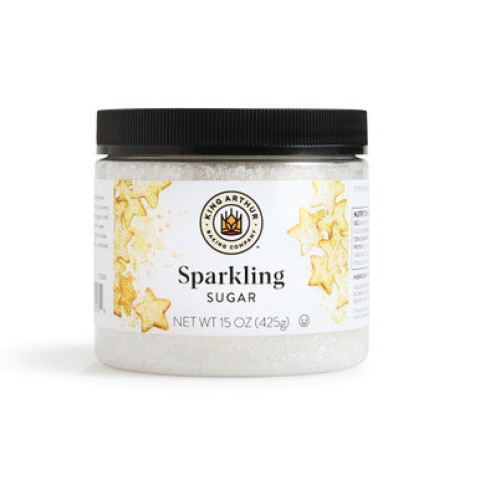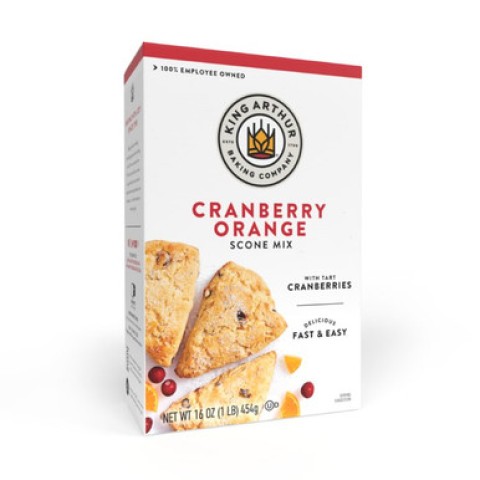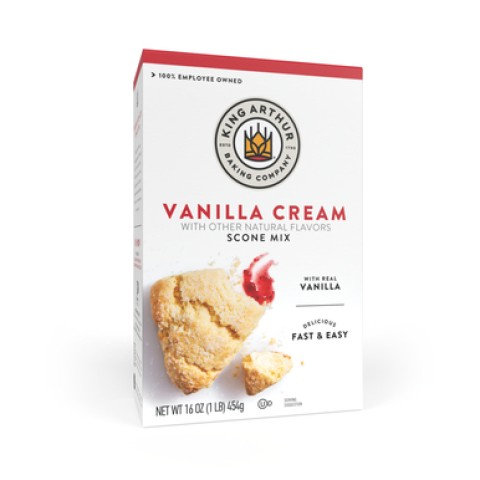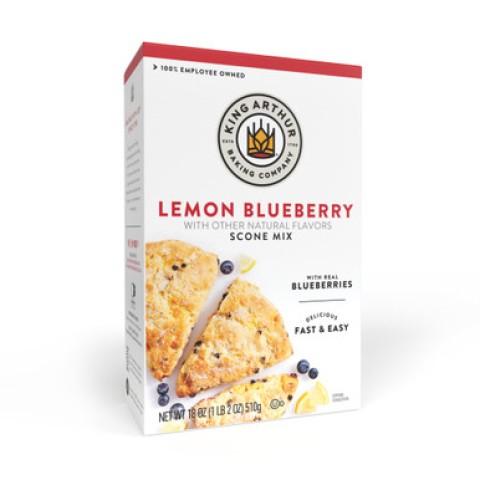Scone Baking
How to bake your best scones.Somewhere between biscuit and muffin, with a delicately crusty exterior and tender, light crumb, American-style scones are part of the morning ritual for many of us. Scones can be a simple vehicle for jam and butter, or they can rise to spectacular heights. But one thing all scones have in common: they're quick and easy to make, and wonderfully tasty — all on their own, or with a cup of tea or coffee. Join us as we show you the simple path to great scones.
In this guide...
Let's make scones
This simple recipe for Scones is the perfect blank canvas — light-gold outer crust, moist inner crumb, and versatile enough to accommodate most add-ins. Master the easy steps shown here, and you'll learn important techniques that apply to pretty much every scone recipe.
1. Work the butter
For the most tender scones, use very cold butter diced into 1/2" chunks. Work the butter into the flour gently but thoroughly with your hands or a pastry blender. For flakier scones, flatten the chunks with your fingers as you go. The finished mixture should be unevenly crumbly, with some of the butter remaining in larger flattened piece.
2. Bring the dough together
Whisk together the eggs, milk, and vanilla, and pour over the dry ingredients. Using a bowl scraper or spatula, quickly but gently fold everything into a cohesive mass (with perhaps a few floury/dry spots). Avoid over-handling, which makes tough scones.
3. Shape scones
For wedge-shaped scones, divide the dough in half and shape into two 5" to 6" rounds about 3/4" thick. Place rounds on a parchment-lined baking sheet; you'll cut them later. For freeform ("drop") scones, scoop 2" balls of dough onto a parchment-lined baking sheet, spacing them at least 1" apart. For details on both methods, see an easy way to shape scones.
4. Prepare scones for baking
For best browning, brush rounds (or drop scones) with milk or cream before baking. For added crunch and flavor, top with sugar (granulated, turbinado, or sparkling) or cinnamon-sugar. Cut each round into 6 or 8 wedges; a bench knife works well here. For soft-sided scones, leave wedges close together; for crispier scones, separate wedges slightly (about 1" at their outer edge).
5. Bake scones
Bake scones in a 425°F oven for 18 to 23 minutes, until they're a very light golden brown. Don't over-bake; dark scones will be dry. Break one open to check for doneness: the interior shouldn't appear doughy or wet, but should feel nicely moist. Remove scones from the oven and serve warm; or cool completely on a rack before topping with any optional glaze.
Favorite Recipes
Tips
Perfect your scone technique
Ingredient selection
- Use all-purpose flour for a higher rising scone that holds its shape nicely, both in and out of the oven. To make more delicate, lower-rising, cake-like scones, substitute cake flour for all-purpose flour. Reduce the liquid in the recipe by 1 to 2 tablespoons, using just enough to bring the dough together.
- For scone recipes that don't already call for egg: create soft, muffin-like texture and an open crumb by replacing 1/4 cup (57g) of the liquid in the recipe with 1 large egg.
- If you choose to make scones with lower-fat dairy (skim milk, low-fat yogurt), they'll be slightly less tender than those made with whole milk or yogurt, half-and-half, or cream.
- For gluten-free scones, replace the all-purpose flour in your favorite scone recipe with King Arthur Gluten-Free Measure for Measure Flour.
Personalizing
- For scones with added flavor, stir nuts, chips, dried fruit, or Jammy Bits into dry ingredients before adding liquids. Use 1/3 cup mix-ins for every cup of flour in the recipe. For a collection of our favorite combinations, see Baking customized scones.
- Beware of juicy mix-ins like fresh fruit; their extra moisture can make scones soggy. For tips on how best to handle and pair fruits, see Summer fruit scones. Consider roasting or grilling fresh fruit to concentrate juices and flavor.
- Scones made with cream (rather than butter) are rich and cake-like, while scones made with butter are tender and flaky. Based on your preference, make your favorite recipe using either butter or cream: Cream scones vs. butter scones.
- Make dairy-free scones by replacing butter with vegan butter and replacing milk or cream with high-fat, unsweetened non-dairy milk (e.g. coconut or soy milk). Read more about dairy-free scones and other breakfast staples: How to make your morning meal without dairy.
Final touches
- Brushing scones with milk or cream before baking yields a golden crust. For deeper color and added shine, brush with egg wash: 1 whole egg mixed with 1 tablespoon water and a pinch of salt.
- For added sweetness and an elegant look, try this simple glaze: 1 cup (113g) confectioners' sugar plus 2 to 3 teaspoons milk, water, or juice, enough to make a thick but pourable glaze. Drizzle over room-temperature scones.
- Enjoy scones in the traditional British fashion by serving with Double Devon Cream or Clotted Cream. Both spreads are made from thickened heavy cream; clotted cream is tangier than double cream.
Time savers
- Need to take a short break? Place pan of shaped scones into the freezer for up to 30 minutes before baking. This short rest relaxes the gluten, making scones more tender; and cold chills the fat, increasing flakiness.
- Make scone dough up to three days ahead. Shape into 3/4"-thick disks, wrap in plastic, and refrigerate until ready to cut and bake.
- To freeze unbaked scone dough, shape into individual drop scones or disks (cut into wedges but not separated). Place on a baking sheet, freeze, remove from baking sheet, and store airtight in plastic. When you're ready to bake, place frozen scones on a baking sheet, and thaw at room temperature for 30 minutes or so, while your oven preheats. Bake according to your recipe directions. For details, read Freeze and bake scones. Mini scones may be baked directly from the freezer (no thawing needed); you may need to increase bake time by 2 to 3 minutes.
Traditions & history
Scones are a centuries-old tradition in Great Britain, where they've been enjoyed in one form or another since at least the 1500s. England, Scotland, Ireland, and Wales all have their own versions of this simple breakfast and teatime treat, which has evolved from a very plain mixture of barley or oats and water cooked on a griddle to its current much more elegant baked incarnation. The modern British scone (pronounced "sgonn," rhymes with gone) is made with white flour, sugar, a leavener, butter, and milk. Similar to American biscuits (though less rich), it's classically served with raspberry or strawberry jam and thickened cream (Clotted Cream or Double Devon Cream).
The American-style scone (rhymes with stone) features a greater variety of ingredients than its British cousin. Often enriched with egg, augmented with butter and/or heavy cream, and studded with anything from toasted nuts to chocolate chips, the American scone is an eclectic hybrid of biscuit, soft cookie, and cake. Topped with sugar, glazed with icing, and/or served with additional butter and jam, American scones have definitely forged their own New World path.


